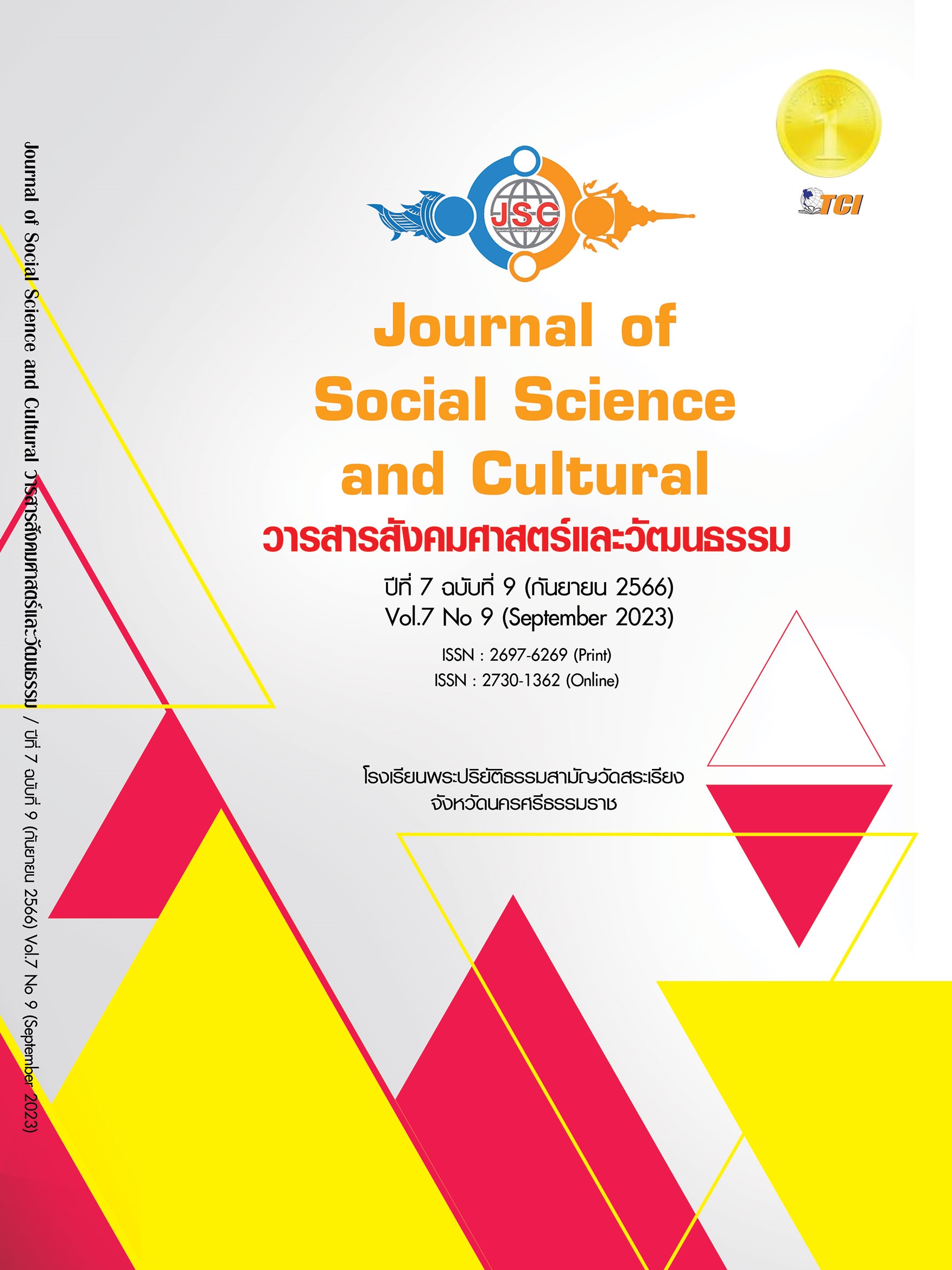TASTELESS LANGUAGE: THAI AESTHETICS IN CONSUMERIST CULTURE
Main Article Content
Abstract
This article aims to present the perception and lifestyle of people in urban society towards aesthetic taste and beauty that correspond to consumerist culture, which is now considered the mainstream culture and has become a major factor in the lives of most people in Thai society. The content in this article is divided into 3 parts: 1) The emersion of nostalgic state of mind among people of the present day that are continuously affected by the economic and social changes. 2) Reflection of inequality through representations of objects that have been overlooked and labeled with everyday consumables which become materials for searching Thai identity and for creating designed works of many designers in various fields. This prompts the search for the genuine identity of true Thainess, which is ordinary people’s way of life. The benefit of usability is being considered in design more than the beauty according to international standards. 3) Presenting the issue of "Tasteless Language" which can be compared to the language of the commoners. The language of the commoners often gives a feeling of nostalgia. Also, it is a way to proclaim identity in Thai society that can be presented at any time. Consider from the point of view of those who value these matters, such idea is like inherited wisdom of the commoners that is not disparate or inferior to the wisdom from any craftsman family. Plus, it is a living inherited wisdom that can always be re-applied easily with no formalities required. Thus, Tasteless Language is a language used to communicate feelings which reflects Thai aesthetics that are in line with the economic and social context of consumerist culture.
Article Details
References
เดอะสตรัคเจอร์. (2565). วิกฤตต้มยำกุ้ง 2540. วิกฤตที่ทำให้ประเทศไทยล้ม ก่อนที่จะลุกขึ้นมาใหม่ เป็นไทยที่แข็งแรงมั่นคงกว่าเดิม. เรียกใช้เมื่อ 23 มีนาคม มีนาคม 2566 จาก https://shorturl.asia/tKZj2
ถนอม ชาภักดี. (28 กุมภาพันธ์ 2540). ฤกษ์ฤทธิ์ ตีระวนิช Chef-Conceptual Artist. เนชั่นสุดสัปดาห์, หน้า 66-67.
ธีรยุทธ บุญมี. (2546). โลก Modern & Postmodern. กรุงเทพมหานคร: สายธาร.
บริษัท เวอร์ค่อน ประเทศไทย จำกัด. (2563). Contemporaries จานที่ยังไม่ได้ล้าง ก็เป็นศิลปะกับเขาได้เหมือนกันนะ! เรียกใช้เมื่อ 13 เมษายน 2566 จาก https://shorturl.asia/Gad81
ประชา สุวีรานนท์. (2554). อัตลักษณ์ไทย จากไทยสู่ไทย ๆ. (พิมพ์ครั้งที่ 2). กรุงเทพมหานคร: ฟ้าเดียวกัน.
ภาณุ อิงคะวัต. (2538). ฮอทด็อก แฮมเบอร์กอร์ และแอปเปิ้ลพาย. กรุงเทพมหานคร: สมาคมผู้กำกับศิลป์บางกอก.
ภูมิพิชญ์ ยาสิทธิ์. (2560). ถอดบทเรียนวิกฤติต้มยำกุ้งผ่านเศรษฐกิจประเทศไทยและอาเซียน. เรียกใช้เมื่อ 10 มีนาคม 2566 จาก https://www.parliament.go.th/ewtadmin/ewt/parliament_parcy/ewt_dl_ link.php?nid=45243
รุ่งนภา พิมมะศรี. (2565). “ต้มยำกุ้ง” กับ “IMF” วิกฤติร่วมยุคสมัย ที่พรากความฝันหนุ่มสาวไทยและเกาหลี ไม่ต่างกัน. เรียกใช้เมื่อ 15 กุมภาพันธ์ 2566 จาก https://plus.thairath.co.th/topic/business/101333
วิรุณ ตั้งเจริญ. (2547). ศิลปะสมัยใหม่ Postmodern Art. กรุงเทพมหานคร: สันติศิริการพิมพ์.
วุฒิชัย กฤษณะประกรกิจ. (2548). เมืองใหญ่ในวงเล็บ. (พิมพ์ครั้งที่ 1). กรุงเทพมหานคร: แพรว สำนักพิมพ์.
สรรเสริญ สันติธญะวงศ์. (2560). ศิลปะในศตวรรษที่ 20. นครปฐม: โรงพิมพ์มหาวิทยาลัยศิลปากร.
เอ็กสเปซแกลอรี่. (2566). ศิลปินผู้ลดช่องว่างระหว่างศิลปะกับชีวิต ฤกษ์ฤทธิ์ ตีระวนิช. เรียกใช้เมื่อ 5 มกราคม 2566 จาก https://xspace.gallery/blogview?i_uid=7r0cz56ewnjm
Kant, I. (1987). Critique of Judgment, Translated with an Introduction by Warner S, Pluhar. Cambridge: Hackett.
Smith, P. C. (2005). Very Bangkok in The City of The Senses. (1 nd ed). Bangkok: River book publisher.


